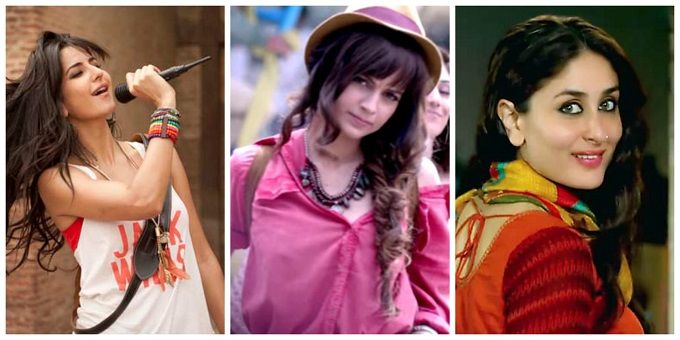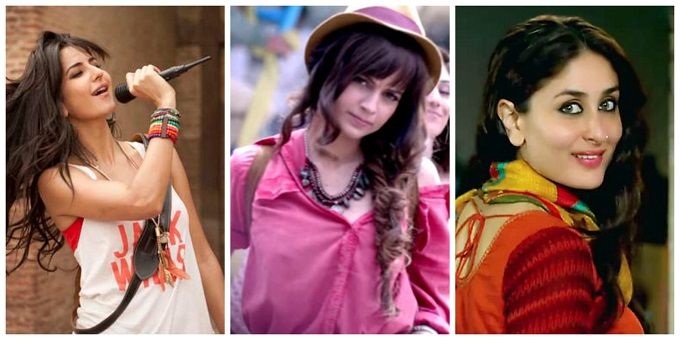
Very often, writers slot their characters into tropes or cliches. In male characters, we mostly have a typical ‘bad boy’ or the ‘underdog’. In female characters, there’s usually the ‘bitch’ and the ‘plain Jane’ and their various extensions. These are all established conventions that are more or less found in every story we’ve seen, read or heard. Bollywood has definitely upgraded when comes to the typical villain (who are sexy anti-heroes now) and the plain Janes (who aren’t plain anymore). However, if there’s one stereotype our industry really clings on to – it’s the manic pixie dream girl. Coined by film critic Nathan Rabin, this character trope was explained as:
That bubbly, shallow cinematic creature that exists solely in the fevered imaginations of sensitive writer-directors to teach broodingly soulful young men to embrace life and its infinite mysteries and adventures. MPDGs are said to help their men without pursuing their own happiness, and such characters never grow up; thus, their men never grow up.
Rings a bell, doesn’t it? Critics in Hollywood have pointed out various examples of the MPDGs, like Kirsten Dunst‘s character in Elizabethtown, Penny Lane (played by Kate Hudson) in Almost Famous, Natalie Portman‘s Sam in Garden State and even good ol’ Belle from Beauty And The Beast. Thankfully, there have also been movies made and roles written specifically to destruct this character trope. Commonly cited examples are Kate Winslet‘s character Clementine in Eternal Sunshine of the Spotless Mind or even Zooey Deschanel‘s Summer in 500 Days of Summer. Summer, when shown from the guy’s point of view, is more of his perception of the ideal woman. She’s rather different than the real Summer who we see later in the movie.
While this concept has been recognized and debated in Hollywood, Bollywood has never really recognized how often they show a character like this. Especially now, when the foreign media openly criticizes the MPDG, we seem to be going in reverse and writing more whimsical, lively, bubbly girls whose sole purpose in the movie is to convince their heroes to ‘live’.
Katrina Kaif and Kareena Kapoor are the names that pop up in my head whenever this trope is written about. Katrina’s role in Mere Brother Ki Dulhan, Zindagi Na Milegi Dobara or even Dhoom 3 is only limited to making the hero feel loved and important. Kareena’s most loved character, Geet, is an MPDG through and through. She’s thankfully not a stereotype because Jab We Met is directed by Imtiaz Ali. Imtiaz saved Geet and the film by changing her character arc in the second half of the movie, making Geet iconic and JWM much more than just a breezy rom-com. On the other hand, in Ek Main Aur Ekk Tu and Bajrangi Bhaijaan (which are unfortunately not directed by Imtiaz), Kareena is primarily there just to make the hero realize how good or ‘perfectly average’ (in the case of EMAET) he is. Genelia D’Souza‘s Aditi from Jaane Tu Ya Jaane Na is another prime example of a character being used to enhance the lead. Aditi’s spunk, jealousy, possessiveness and her encounter with violence are just some factors used to ‘man up’ the male protagonist, Jai.
The latest one to join this bandwagon broke my heart a little because it was played by Kangana Ranaut. The actress – who had given us the anti-manic pixie dream girl in Tanu Weds Manu and its sequel – disappointed us all with Payal in Katti Batti. In Katti Batti, she was just another ‘cool’ girl whose main purpose in her *SPOILER ALERT* short life was to make her boyfriend hate and forget her. Just so that, you know, he can ‘live again’.
I honestly don’t dislike this trope – because I’ve personally liked a lot of the above-mentioned movies. My issue here is that we need to recognize the problem, and after recognizing it, we need a few more movies which star the anti-MPDG. There needs to be a larger variety of female characters so that some balance is restored in the already male-dominated Bollywood. After all, how many times can you watch the same bubbly girl ‘inspire’ her hero again and again?
Food for thought: Notice how most Bollywood movies with manic pixie dream girls usually have Imran Khan play the leading man? These stereotypes, I tell you…!

